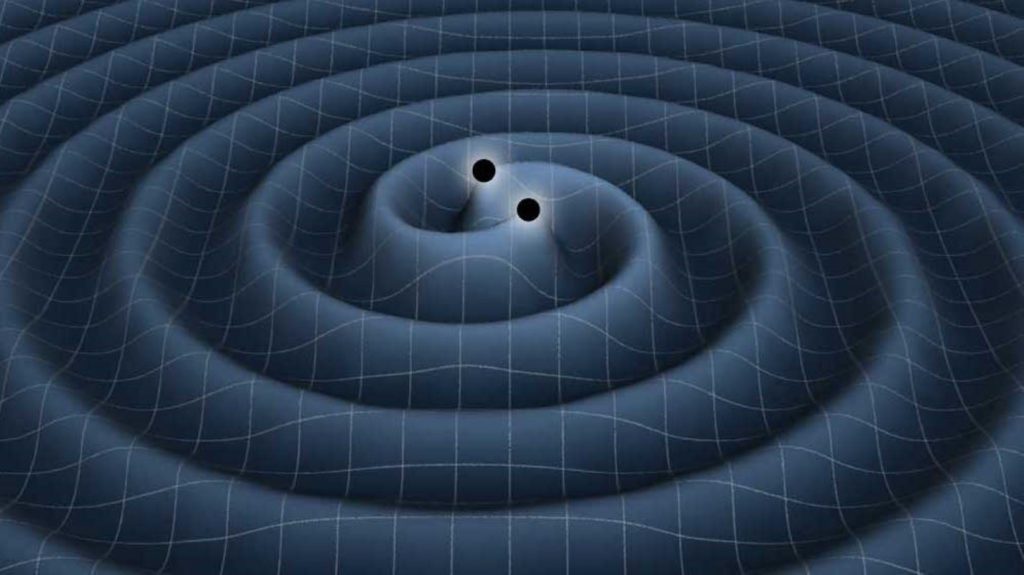1.76 billion light years away, two black holes smashed into one another, bearing one huge black hole the size of 53 suns. The explosion from this merger created enormous distortions in spacetime, known as gravitational waves. These gravitational ripples have been flying through the universe, and finally visited Earth. The gravitational waves, theorized by Einstein, were detected by LIGO and Advanced Virgo, which made it the first triple detection of a gravitational wave in history.
LIGO, or the Laser Interferometer Gravitational-Wave Observatory is a set of two detectors one located in Livingston, Louisiana and the other in Hanford, Washington. Advanced Virgo is brand new gravitational wave detector, which came online on August 1, 2017 and is located in Pisa, Italy. All three of the instruments detected the event on August 14, 2017 at 10:30 UTC. First, the Livingston detector saw the distortion, then an 8000th of a second later, the Hanford detector reported the disturbance, and finally a 6000th of second after by the Advanced Virgo detector.
 Merging black holes have already been observed three times by LIGO, twice in 2015 and once earlier this year in 2017. This new event confirms that the merging of a pair of black holes is quite common if we are able to detect them so frequently.
Merging black holes have already been observed three times by LIGO, twice in 2015 and once earlier this year in 2017. This new event confirms that the merging of a pair of black holes is quite common if we are able to detect them so frequently.
The black hole merger discovered in August is Advanced Virgo’s first detection. With three detectors online, scientists are able to triangulate the location of the event in the sky with 10 times more precision, as well as reduce the probability of false positives by a factor of 50. Another important scientific contribution of the Advanced Virgo detector is its orientation. The Virgo detector is perpendicular to the two LIGO detectors. The perpendicular orientation allows scientists to test deeper aspects of Einstein’s general theory of relativity, which predicts that these gravitational waves should be long and stretched in one direction, while short and contracted in the other direction. August 14th’s observation does show this phenomenon, but more extensive tests are being done.
For those curious about the size of these gravitational waves, here is a quick calculation. The two black holes that smashed into one another were 25 suns, and 31 suns in size. The resulting black hole they conceived is 53 suns in size, which means there is 3 suns worth of mass that transformed into gravitational waves. The most famous equation from Einstein is that E = mc2. This equation tells us that the missing mass, 3 suns worth, multiplied by the speed of light squared (referred to as c) will give us the resulting energy of the gravitational wave. My handy calculator tells me this is 536 billion billion billion billion billion[1. Also can be written as 5.36 x 1047 J, for our readers comfortable with this notation.] joules, the classic unit of energy. This number is too large to mean anything on its own, so in terms of the largest nuke ever created by humans, the Tsar bomba, this collision released the energy of 2 nonillion[2. That’s 2.234 x 1030 Tsar bomba nukes] (that’s 30 zeros) Tsar bombas!
This is a crazy amount of energy at the source, but these occur very, very far away. So fear not, this black hole merger occurred 1.76 billion light years away, so the energy that LIGO and Virgo detectors saw was equivalent to roughly that of a lightbulb for one day. Phew!


